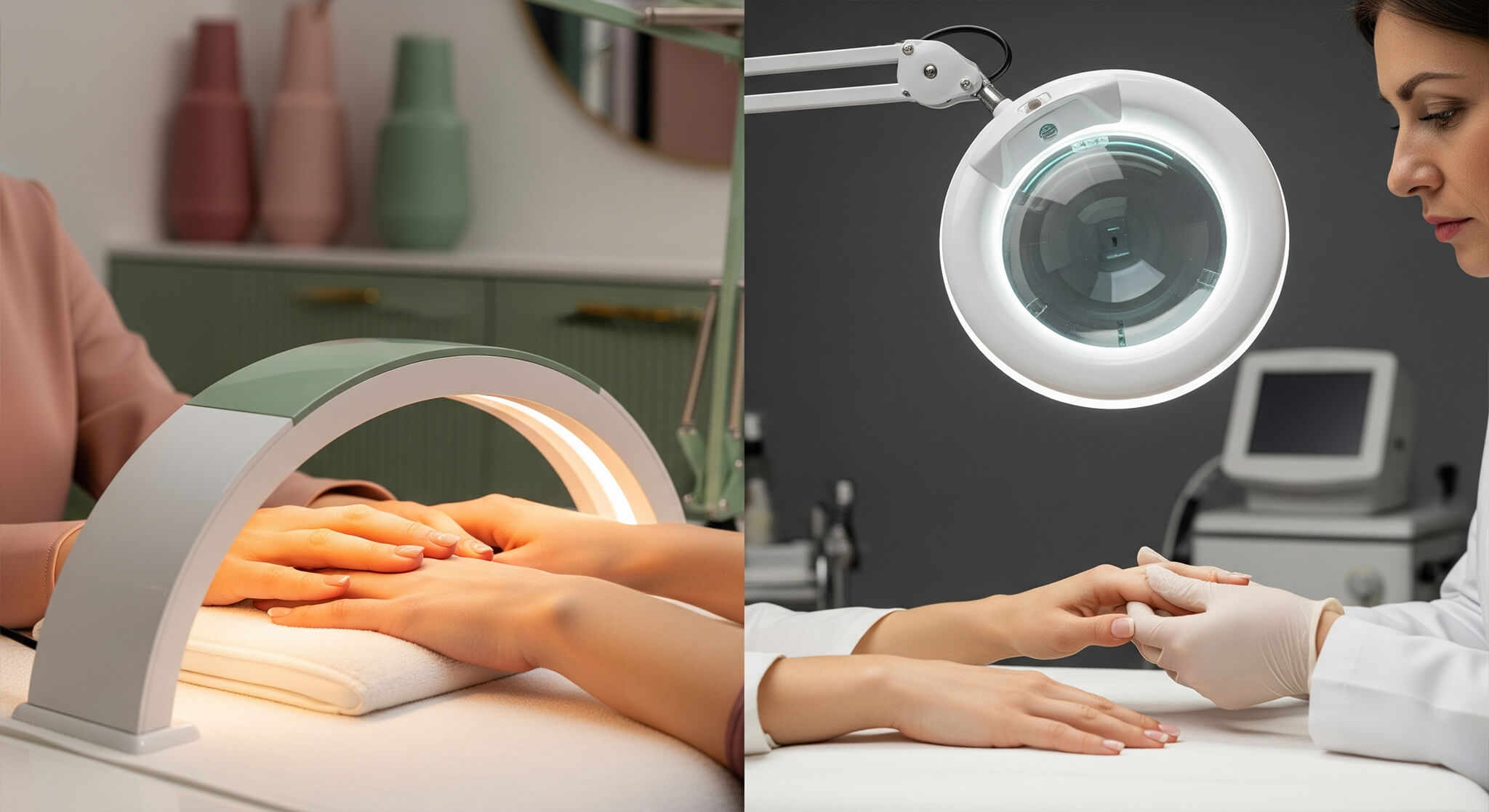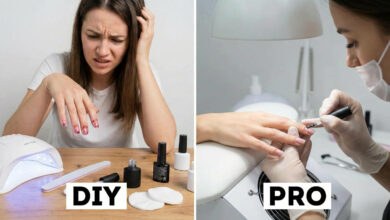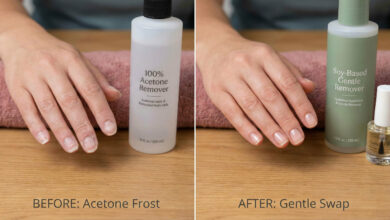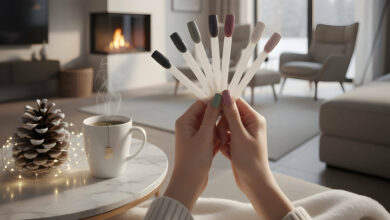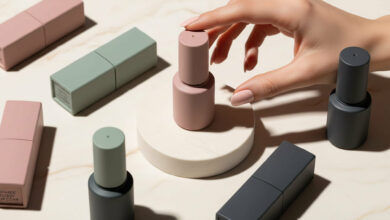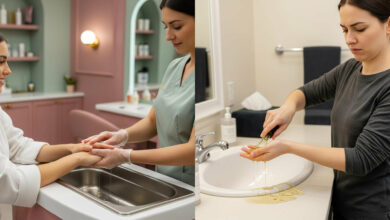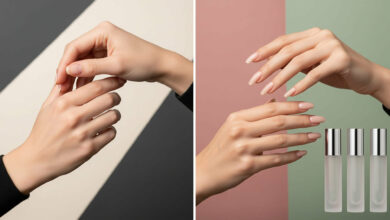Are the UV Lamps for Gel Polish Dangerous? A Scientific Review
Table of contents
The “Price” of a Perfect Manicure: Unpacking the UV Risk
There’s nothing like the glossy, chip-proof, two-week perfection of a gel manicure. It has become a staple of modern beauty routines. But as you place your hands under that glowing blue lamp, a worrying thought might cross your mind: Is this actually safe? The well-known link between UV radiation and skin damage has created significant anxiety and confusion around these popular nail salon devices.
So, what is the real, science-backed risk of using UV nail lamps? Are they a significant cause for concern, or is the danger overblown?
We’re diving into the latest scientific studies and dermatologist recommendations to give you a clear, balanced answer on the risks, and most importantly, the simple, non-negotiable steps you must take to protect your hands.
The Science: Understanding the Radiation in Your Nail Lamp
To understand the risk, we first need to understand the light.
It’s All About UVA Rays
The sun emits different types of ultraviolet radiation, primarily UVB (the “burning” rays) and UVA (the “aging” rays). The lamps used to cure gel polish almost exclusively emit UVA rays.
The Role of UVA in Skin Aging
UVA rays penetrate deep into the skin’s dermis. They are the primary driver of photo-aging and are responsible for breaking down the skin’s collagen and elastin fibers. This degradation leads to the formation of wrinkles & fine lines and a loss of skin firmness. UVA exposure also triggers hyperpigmentation, which shows up on the hands as sun spots or “age spots” (a type of discoloration similar to post-acne acne scars & marks). Crucially, cumulative UVA exposure is also a known risk factor for skin cancer.
The Verdict: Assessing the Actual Level of Risk
This is the most important question, and the science provides a reassuringly nuanced answer.
The Scientific Consensus: The Risk is Low, But Not Zero
Leading dermatological groups, including The Skin Cancer Foundation, have concluded that the risk from UV nail lamps, when used as directed in a salon, is low. The exposure time during a typical manicure is very brief, and the intensity is significantly less than that of a commercial tanning bed.
To put it in perspective, one widely cited 2014 study in the journal JAMA Dermatology found that a person’s hands are exposed to a significantly higher dose of UV radiation from normal daily activities, like driving a car, than they are from a regular gel manicure session.
The Crucial Caveat: The Damage is Cumulative
However, the key word that all experts emphasize is cumulative. The damage from UVA radiation adds up over your lifetime. For those who get frequent gel manicures (for example, every two weeks for many years), this small, repeated exposure can absolutely contribute to the visible signs of aging on the hands and incrementally increase the lifetime risk of skin cancer. The risk is low, but it is real and should be actively managed.
Your “Safe Manicure” Protocol: 3 Non-Negotiable Steps
You don’t need to give up your beloved gel manicures. You simply need to adopt a smart, protective strategy.
Step 1: Apply Broad-Spectrum Sunscreen Before Your Appointment
This is the easiest and one of the most effective lines of defense. About 20 minutes before your manicure appointment, apply a broad-spectrum, high-SPF sunscreen to the backs of your hands. A dedicated hand sunscreen like Supergoop!‘s Handscreen is great, but any good quality sunscreen will work.
Step 2: Use Fingerless UV-Protective Gloves
For maximum protection, invest in a pair of fingerless, UPF (Ultraviolet Protection Factor) rated gloves. You simply slide them on before your polish is applied, leaving only your nail beds exposed to the light while shielding the delicate skin on the rest of your hand. Many nail salons now offer these for their clients, often featuring fabrics with a high Ultraviolet Protection Factor (UPF) rating to effectively block the harmful UVA rays.
Step 3: Choose LED Lamps When Possible
Many modern salons now use LED-style lamps instead of the older compact fluorescent (CF) UV lamps. LED lamps are able to cure the gel polish much faster (often in 30-60 seconds, versus 90-120 seconds for CF lamps), which significantly reduces your total UV exposure time during the appointment.
The Final Word: An Educated, Not Anxious, Approach
So, are UV lamps for gel polish dangerous? The current scientific consensus is that for the average user, they pose a very low risk. However, that risk is not zero, and the damage accumulates over a lifetime.
There’s no need to give up your gel manicures out of fear. The key is to shift from a place of anxiety to one of educated precaution. By taking simple, powerful protective measures like applying sunscreen or wearing protective gloves, you can enjoy the long-lasting beauty of a gel manicure while keeping your hands healthy and youthful for decades to come.
